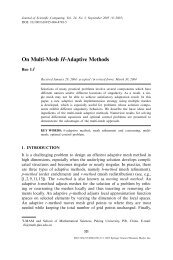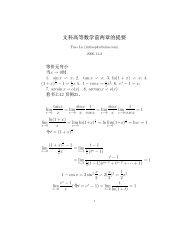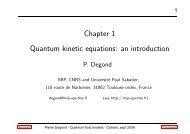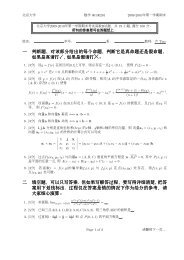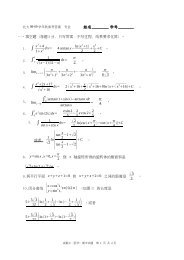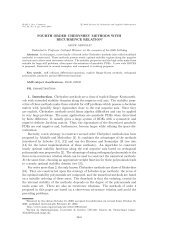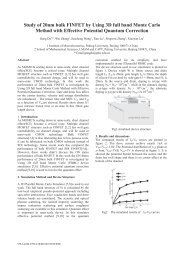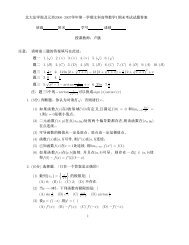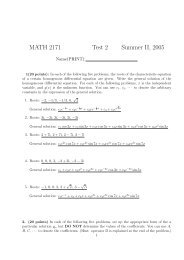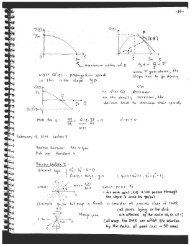Abstract
Abstract
Abstract
You also want an ePaper? Increase the reach of your titles
YUMPU automatically turns print PDFs into web optimized ePapers that Google loves.
APPENDIX C. GUIDE TO RTD SIMULATION CODE 148<br />
henry2 maintained by the High Performance Computing division at North Carolina<br />
State University. The newcompilehopf is tuned for a particular version of Trilinos,<br />
and therefore, must be editted with that in mind. Here are the steps for performing<br />
a continuation run through a voltage range for the RTD simulation.<br />
1. Set parameter values in grid.h and material.dat.<br />
The values set in grid.h determine the discretization and correlation length used<br />
in the simulation while the values set in material.dat determine the physical<br />
structure of the device.<br />
2. Copy makeinit to makefile, typemake clean, typemake, and run the compiled<br />
program init.<br />
Typing make clean will clean up remaining files from previous initializations,<br />
and typing make compiles the program init. Run the program by submitting a<br />
job to the queue.<br />
3. Set the continuation parameters in RTDContinuationParallel.C and copy the<br />
initial guess for the steady-state distribution at the first continuation parameter<br />
into the data file initial.out.<br />
You will need to set such things as initial voltage parameter, lower and upper<br />
bounds on the voltage range, initial step in the voltage parameter, and decide<br />
if you want to compute eigenvalues for a stability analysis of the steady-state.<br />
If you want to start at V =0,thencopysol.out to initial.out since f0(x, k) is




